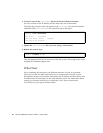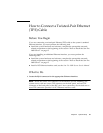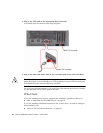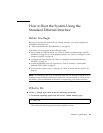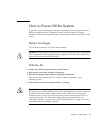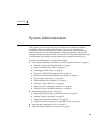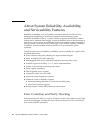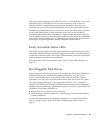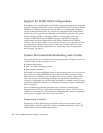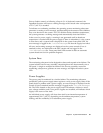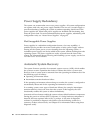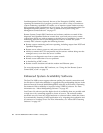
64 Sun Fire 280R Server Owner’s Guide • January 2001
About System Reliability, Availability,
and Serviceability Features
Reliability, availability, and serviceability (commonly known as RAS) are three
design goals contributing to continuous operation and minimizing system
downtime. Reliability refers to a system’s ability to operate continuously without
failures and to maintain data integrity. System availability refers to the percentage of
time that a system remains accessible and usable. Serviceability relates to the time it
takes to restore a system to service following a system failure. Together, reliability,
availability, and serviceability features provide for near continuous system
operation.
To deliver high levels of reliability, availability, and serviceability, the system offers
the following features:
■ Error correction and parity checking for improved data integrity
■ Easily accessible LED status indicators
■ Hot-pluggable disk drives with status indicators and easy front access
■ External support for RAID 0, 1, 0 + 1, and 5 implementations
■ System environmental monitoring and control
■ Power supply redundancy
■ Hot-swappable power supplies
■ Automatic system recovery (ASR)
■ Improved system diagnostics software
■ Enhanced system availability software
■ Alternate pathing (alternate I/O network and disk paths)
■ Sun Cluster software support
■ Remote System Control (RSC) hardware and software
Error Correction and Parity Checking
Error-correcting code (ECC) is used on all internal system data paths to ensure high
levels of data integrity. All data that moves between processors, I/O, and memory
have end-to-end ECC protection.



